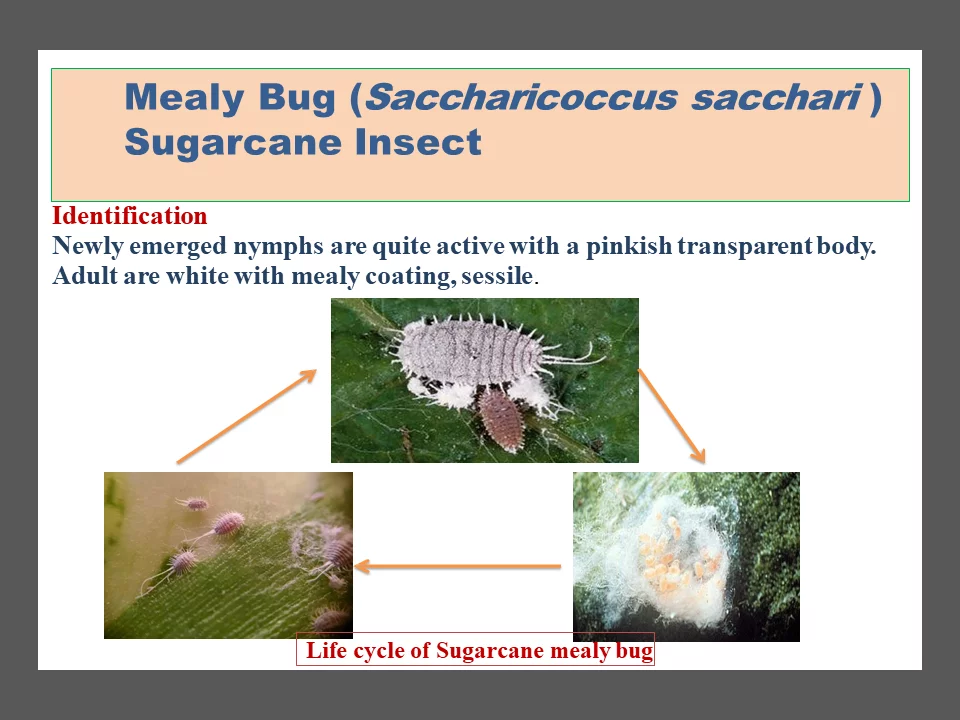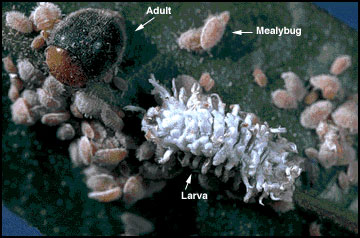MEALYBUGS: The Dreaded Pest. A Comprehensive Guide to Dealing with Mealybugs on Succulents.
- Succulents & Propagation
- Aug 27, 2023
- 8 min read
Updated: Feb 28
Fun fact! Mealybugs, belonging to the Pseudococcidae family, comprises 250 genera and over 2,000 species of plant-sucking insects. How to treat mealy bugs, how to treat mealybugs, mealy bugs, succulents & propagation, Succulents & Propagation

Understanding Mealybugs and Their Impact on Your Succulents
Although succulents are known for their resilience and ability to thrive in various conditions, they are not invincible to pests. The dreaded mealybug is one common intruder that can wreak havoc on your beautiful succulents. These soft-bodied insects, of different shapes and sizes, feed on plant sap, causing stunted growth, yellowing leaves, and death if not treated. In this blog, we will explore some common mealybugs, how to identify them, and more importantly, how to effectively treat and prevent infestations on your precious succulents.
How to treat mealy bugs, how to treat mealybugs, mealy bugs, succulents & propagation, Succulents & Propagation
Jump to a section ⤵️
How to treat mealy bugs, how to treat mealybugs, mealy bugs, succulents & propagation, Succulents & Propagation
Identifying Mealybug Infestations on Succulents
Identifying a mealybug infestation on your succulents is the first step in combating these pests. Mealybugs are typically small, ranging from 1/20th up to 1/5th of an inch in size. They have a soft, oval-shaped body covered in a white, cottony substance.
How to treat mealy bugs, how to treat mealybugs, mealy bugs, succulents & propagation, Succulents & Propagation
Common visual signs of mealybugs include small to large clusters of white, fluffy masses on the inner corner of leaves, stems, and even the roots of succulents. These pests often hide in protected areas such as leaf axils, crevices, and the undersides of leaves.
How to treat mealy bugs, how to treat mealybugs, mealy bugs, succulents & propagation, Succulents & Propagation
Uhm.. What am I looking for exactly?
Individual bugs on leaves/stems can also be in groups
Small or large white patches of 'fuzz' looking cotton in crevecases and
Waxy/web-like cottony substances
Understanding mealybugs and their impact on succulents is crucial for effective pest management. Identifying these pests is crucial for their effective treatment! If you are not sure what they look like scroll below for some photo images.
Types of Mealybugs
There are several species of mealybugs that commonly infest succulents. Below is a list, descriptions, and a few photos of the most common ones you might encounter.
A Mealybug (Vryburgia trionymoides) DeLotto
Citrus Mealybug (Planococcus citri) Risso
Long-tailed Mealybug (Pseudococcus longispinus)
Cactus Mealybug (Hypogeococcus festerianus)
Solanum Mealybug (Phenacoccus solani)
Mexican Mealybug (Phenacoccus gossypii)
Root Mealybug (Rhizoecus) *there are many kinds of root mealybugs in this subspecies
Madeira Mealybug (Phenacoccus madeirensis)
Vine Mealybug (Planococcus ficus)
Pink Hibiscus Mealybug (Maconellicoccus hirsutus)
How to treat mealy bugs, how to treat mealybugs, mealy bugs, succulents & propagation, Succulents & Propagation
PHOTOS
(click on any of the photos to be taken to their original website)
One of the most prevalent is a mealybug (Vryburgia trionymoides) DeLotto, this mealybug is pinkish-purple, with a light coating of white wax over the body, and thick white filaments arising from the tip of the abdomen. The pinkish-purple body color may be obscured by the powdery wax coating.
A mealybug (Vryburgia trionymoides) DeLotto. From left to right; adult females, mixed population, field appearance of V. distincta occurring on Echeveria sp.
Second most prevalent is the citrus mealybug (Planococcus citri), which have a pale yellow body covered in a white, waxy substance.
Citrus mealybug (Planococcus citri). From left to right; adult female, adult male, larvae.
Another common species is the long-tailed mealybug (Pseudococcus longispinus), characterized by its long, thread-like tails.
Long-tailed mealybug (Pseudococcus longispinus). From left to right; adult female, adult male, larvae.
Solanum Mealybug (Phenacoccus solani) This genus is the largest group in the Pseudococcidae.
(Phenacoccus solani) Ferris, 1918: From left to right; Population of P. solani, Field appearance of P. solani occurring on Echeveria sp.
How to treat mealy bugs, how to treat mealybugs, mealy bugs, succulents & propagation, Succulents & Propagation
Life Cycle of a Mealybug
The life cycle of most species is fairly similar, with females laying 300 to 600 eggs in compact waxy sacs attached to axils of stems or leaves. After egg laying, females die and the eggs hatch in 7 to 10 days into tiny yellowish crawlers (nymphs). The long-tailed mealybug is slightly different in that females give birth to living young. The complete life cycle can take six weeks to two months depending on the species and the environmental conditions.
How to treat mealy bugs, how to treat mealybugs, mealy bugs, succulents & propagation, Succulents & Propagation
Note - In the right conditions, breeding and development can happen all year-round, in controlled environments like greenhouses or indoors, or constantly warm environments.
Treating Mealybugs On Succulents:
How to treat mealy bugs, how to treat mealybugs, mealy bugs, succulents & propagation, Succulents & Propagation
Thankfully, when it comes to treating those darn mealybugs on your succulents, there are various effective methods you can employ.
Step-by-Step Treatment Methods |
Step #1 is quite crucial to stop any further spreading. Isolate plants that have been affected and quarantine them in a safe area away from other plants or materials you use for gardening.
Remove them or wash them off.
Repot and change the soil. Adult mealybugs and larvae may still be lurking deep in the roots, making defeating them even harder.
Continue treatments until the full life cycle has been killed off. This may take a few weeks up to few months.
Note: If you do not feel like treating, or the infestation is severe, bag the affected plants and throw them in the trash. Do not compost!
Removal Options:
Option 1) One effective approach is manual removal.
Using cotton swabs or alcohol-soaked cotton balls, gently dab and remove the mealybugs from the affected areas. This method is suitable for small infestations or isolated mealybugs, it can be painstaking to have to do for larger infestations.
Option 2) Another popular option is using rubbing alcohol spray (isopropyl alcohol).
You can use 70% or less, if using anything higher than 70%, make sure to mix equal parts of rubbing alcohol and water in a spray bottle. You may spray the alcohol directly on the affected areas. The alcohol will dissolve the waxy coating on the mealybugs, causing them to dehydrate and die. *Repeat this treatment every few days until the infestation is under control, you will need to do multiple treatments.
Option 3) Insecticides
For a natural approach, consider using organic remedies like, Insecticidal soap, made from natural fatty acids, it is an effective option. Apply the soap solution to the infested areas, ensuring thorough coverage
How to treat mealy bugs, how to treat mealybugs, mealy bugs, succulents & propagation, Succulents & Propagation
Homemade Insecticide Soap Recipe:
It's easy to make! Just a simple solution of dish soap, ACV (apple cider vinegar) and water can be effective in suffocating mealybugs.
Mix a few capfuls of apple cider vinegar and a few drops of Dawn (or any other brand of dish soap you may have) in a spray bottle filled with water and spray it onto the infested areas. You will need to repeat spray treatments every couple of days or so.
Neem oil:
While some sources suggest neem oil, S&P doesn't recommend it for beginners. Neem oil can cause your succulents to go mushy if not used properly. *Use at your own risk.* If you are a beginner and want to try it out, ask guidance from fellow members in Succulents & Propagation if they have ever used neem oil successfully and have any methods/photos/stories they can share with you.
How to treat mealy bugs, how to treat mealybugs, mealy bugs, succulents & propagation, Succulents & Propagation
→ S&P Tip - Do not use any of the above treatments in sunlight. During treatments, keep your plants away from direct sunlight, the farina is compromised at this time, and sun exposure can lead to irreversible damage such as severe sunburn.
How to treat mealy bugs, how to treat mealybugs, mealy bugs, succulents & propagation, Succulents & Propagation
**In severe infestations, chemical treatments may be necessary. Consult with a professional or your local garden center to select an appropriate insecticide (specifically formulated) for mealybugs. Follow the instructions carefully, taking necessary precautions to protect yourself, other plants, and the environment.**
Prevention and Control Measures
Preventing mealybug infestations is always better than dealing with them later. Regularly inspect your plants, paying close attention to the undersides of leaves and the junctions between stems and leaves. If you introduce new succulents to your collection, quarantine them for a few weeks to prevent the spread of any potential infestations and spray them down with rubbing alcohol as a precaution. Alternatively, consider using natural predators such as mealybug destroyer, ladybugs, predaceous fly larvae, or green lacewings to manage your pesky mealybug infestation.
Mealybug destroyer (Cryptolaemus montrouzieri). Adult & larva.
Additional Tips and Considerations
Effectively treating mealybugs requires addressing contributing factors.
Proper watering and drainage practices are essential, as over-watering can create a damp environment that mealybugs thrive in.
Pruning and removing heavily infested areas can help prevent the spread of mealybugs to healthy parts of the plant.
Regularly clean and disinfect your gardening tools and containers to avoid reintroducing mealybugs or other pests to your other succulents.
Mealybugs directly damage the health condition of plants by sucking plant sap and the excretion of honeydew, which induces sooty molds that inhibit photosynthesis.
To create a healthy environment for your succulents, ensure they receive adequate sunlight and are planted in well-draining soil.
Avoid over-watering as it can create conditions favorable for mealybugs.
Keep a close eye on your succulents even after treatment, as mealybugs can be quite persistent. They will need multiple rounds of treatment to kill all stages of life cycles.
Remember to be continually monitoring for any signs of reinfestation and take immediate action if necessary.
By implementing these preventive measures and promptly treating mealybug infestations, you can ensure the health and beauty of your succulent collection. succulents & propagation
Conclusion
Mealybugs can be a nuisance for succulent enthusiasts, but with proper identification and treatment, you can effectively control and prevent infestations. By creating a healthy environment for your succulents, regularly inspecting your plants, and employing treatment methods such as rubbing alcohol sprays or neem oil mixtures, you can keep these pesky pests at bay. Remember to practice good gardening habits, monitor your plants for any signs of reinfestation, and take proactive measures to maintain the health and vitality of your succulents. With a little care and attention, you can enjoy a thriving succulent collection free from mealybug troubles.
succulents & propagation
💚
How to treat mealy bugs, how to treat mealybugs, mealy bugs, succulents & propagation, Succulents & Propagation
Photo Credit Sites & Info Sources
Mealybug Destroyer + here + here + here
mealy bugs, mealy bugs on succulents, are these mealy bugs, mealybugs on succulents, mealybug infestation, signs of mealybugs, damage caused by mealybugs, mealybug identification, visual signs of mealybugs, common areas where mealybugs hide on succulents, mealybug treatment methods, natural remedies for mealybugs, chemical treatments for severe infestations, manual removal of mealybugs, using cotton swabs or alcohol-soaked cotton balls to remove mealybugs from succulents, natural ways to get rid of mealybugs on succulents, using neem oil or insecticidal soap as organic solutions, chemical insecticides for mealybug control on succulents, precautions and safety measures when using chemicals, meaylbug prevention tips for succulent care, maintaining proper hygiene, quarantine new plants, regular inspections, mealybug treatment mistakes, overwatering succulents, using excessive pesticides, not addressing the root cause of infestation, how to treat mealy bugs, how to treat mealybugs, mealy bugs, succulents & propagation, Succulents & Propagation















































